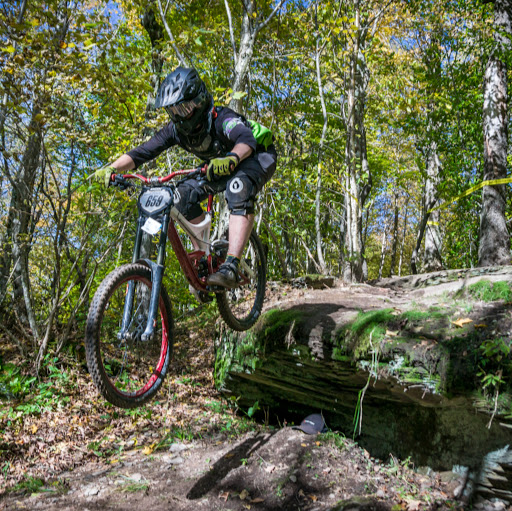Jonathan B Crowell
age ~50
from Lancaster, PA
- Also known as:
-
- Jonathan Browning Crowell
- Jon B Crowell
Jonathan Crowell Phones & Addresses
- Lancaster, PA
- Oxford, PA
- Brooklyn, NY
- Ipswich, MA
- 605 W 142Nd St APT 61, New York, NY 10031
- Astoria, NY
- Cambridge, MA
Work
-
Company:Locke Lord LLP
-
Address:
Us Patents
-
Underwater Acoustic Positioning System And Method
view source -
US Patent:7512036, Mar 31, 2009
-
Filed:Aug 15, 2006
-
Appl. No.:11/464579
-
Inventors:Jonathan C. Crowell - Dorchester MA, US
-
Assignee:Ocean Server Technology, Inc. - Fall River MA
-
International Classification:G01S 3/80
-
US Classification:367127
-
Abstract:A method for determining the position of an underwater device includes placement of a plurality of station keeping devices on or below the surface of the water in known positions. A device to locate is provided for placement below the surface of the water, and the device to locate and the station keeping devices are provided with a synchronized time base and a common acoustic pulse time schedule. Each station keeping device sends an acoustic pulse at a time according to the common acoustic pulse schedule. The device to locate receives pulses sent by the station keeping devices and calculates a distance between itself and each station keeping device based upon the time that the acoustic pulse is sent and the time that the pulse is received. The device to locate then calculates its position based upon the distances between the device to locate and the station keeping devices. Systems and devices are also disclosed.
-
Underwater Acoustic Positioning System And Method
view source -
US Patent:8009516, Aug 30, 2011
-
Filed:Feb 17, 2009
-
Appl. No.:12/372065
-
Inventors:Jonathan C. Crowell - Dorchester MA, US
-
Assignee:Ocean Server Technology, Inc. - Fall River MA
-
International Classification:G01S 3/80
-
US Classification:367128
-
Abstract:A method for determining the position of an underwater device includes placement of a plurality of station keeping devices on or below the surface of the water in known positions. A device to locate is provided for placement below the surface of the water, and the device to locate and the station keeping devices are provided with a synchronized time base and a common acoustic pulse time schedule. Each station keeping device sends an acoustic pulse at a time according to the common acoustic pulse schedule. The device to locate receives pulses sent by the station keeping devices and calculates a distance between itself and each station keeping device based upon the time that the acoustic pulse is sent and the time that the pulse is received. The device to locate then calculates its position based upon the distances between the device to locate and the station keeping devices.
-
External Rescue And Recovery Devices And Methods For Underwater Vehicles
view source -
US Patent:8448592, May 28, 2013
-
Filed:Oct 28, 2008
-
Appl. No.:12/259570
-
Inventors:Jonathan C. Crowell - Dorchester MA, US
David Charles - Franklin MA, US -
Assignee:Ocean Server Technology, Inc. - Fall River MA
-
International Classification:B63B 45/04
B63C 7/26
B63G 8/24
B63G 8/42
B60Q 1/52 -
US Classification:114322, 114326, 114329, 114330, 114336, 116 26, 116209
-
Abstract:Methods and devices are provided for rescuing and recovering underwater vehicles. In one embodiment, a system is provided that includes a modular rescue device configured to attach to an underwater vehicle, such as with a tow line. The rescue device can include one or more emergency mechanisms that can be automatically and/or manually activated to aid in detecting the location of the underwater vehicle in the event of an emergency. One exemplary emergency mechanism includes a buoyancy mechanism, e. g. , an expandable lift bag, configured to be inflated with a fluid to add buoyancy force to the system to pull the underwater vehicle toward a water surface. Another exemplary emergency mechanism includes a signaling mechanism configured to signal the underwater vehicle's location.
-
Power Controller For Managing Arrays Of Smart Battery Packs
view source -
US Patent:20050275372, Dec 15, 2005
-
Filed:Jun 14, 2005
-
Appl. No.:11/151991
-
Inventors:Jonathan Crowell - Dorchester MA, US
-
International Classification:H02J007/00
-
US Classification:320112000
-
Abstract:A power controller combines a multitude of smart battery packs into a single large bank, providing balanced charging and discharging. Battery packs are connected in parallel to form groups that may then be connected in series, while the specification limits for current and voltage of individual packs are maintained through microprocessor control of the battery pack charging circuits. The state of each pack is monitored, and charging of a pack at too high a charge is inhibited until the other packs in the group are sufficiently charged to allow balanced current-sharing. The state of each battery is broadcast on a bus to all processors so that each may determine whether there are enough packs of similar charge to safely source a load. The system preferably incorporates management firmware that allows user monitoring of the status of the power subsystem and all connected battery packs.
-
System And Method For Determining The Position Of An Underwater Vehicle
view source -
US Patent:20090216444, Aug 27, 2009
-
Filed:Feb 15, 2007
-
Appl. No.:11/675167
-
Inventors:Jonathan C. Crowell - Dorchester MA, US
-
Assignee:Ocean Server Technology, Inc. - Fall River MA
-
International Classification:G01C 21/00
G06F 15/00
G01B 17/00
G01B 11/14 -
US Classification:701213, 701207, 702158
-
Abstract:A system and a method are provided for determining the position of an underwater vehicle while the vehicle is operating underwater. A buoyant float stays on or near the surface of the water and is attached to the vehicle by thin tether that can include insulated wires. The vehicle moves under the water and pulls the float behind it. The float can receive a localization signal, such as a signal indicating its GPS position, and so can determine its position precisely. The position can be transmitted to the underwater vehicle over the wires located in the tether. The underwater vehicle can use sensors and/or calculations to determine the positional offset of the vehicle from the float buoy and generates its true position based on the known position of the float and the positional offset. The float can be constructed with attributes that will allow the float it operate with a greater tether length, and in turn allow the underwater vehicle to operate at greater depths. The float may also generally carry a radio system for high speed communication of signals from the vehicle while the vehicle is submerged.
-
Method And Apparatus For Testing Of Electrical Interconnection Networks
view source -
US Patent:45659664, Jan 21, 1986
-
Filed:Mar 7, 1983
-
Appl. No.:6/473590
-
Inventors:Robert P. Burr - Matinicus ME
Raymond J. Keogh - Huntington NY
Ronald Morino - Sea Cliff NY
Jonathan C. Crowell - Brooklyn NY
James B. Burr - Centerport NY
James C. Christophersen - West Islip NY -
Assignee:Kollmorgen Technologies Corporation - Dallas TX
-
International Classification:G01R 1512
-
US Classification:324 73PC
-
Abstract:A method and apparatus for testing circuit boards using two or a small number of probes for making resistive and radio frequency impedance measurements e. g. capacitive measurements. The combination of resistive and impedance measurements substantially reduces the number of tests required to verify the integrity of a circuit board. The impedance or capacitive "norm" values used in testing the circuit boards can be obtained by operating the system in a learning mode. Analysis of the data provides not only fault detection but also can indicate approximate fault location.
-
Method For Scribing Conductors Via Laser
view source -
US Patent:48183229, Apr 4, 1989
-
Filed:Sep 14, 1987
-
Appl. No.:7/096873
-
Inventors:Ronald Morino - Sea Cliff NY
Brian E. Swiggett - Huntington NY
Raymond J. Keogh - Huntington NY
Jonathan C. Crowell - Lakeville MA -
Assignee:Kollmorgen Technologies Corporation - Dallas TX
-
International Classification:B23K 2602
B23K 2608
B32B 3128 -
US Classification:1562728
-
Abstract:This invention relates to a method of using laser energy for bonding and stripping conductors during the scribing operation. The method provides and directs discrete laser beam pulses of substantially the same energy content at a rate which continuously varies as the conductor feed rate continuously varies to provide a constant number of discrete pulses for each incremental length of conductor being scribed.
-
Underwater Acoustic Tracking And Two Way Messaging System
view source -
US Patent:20200271780, Aug 27, 2020
-
Filed:Jan 28, 2020
-
Appl. No.:16/774866
-
Inventors:- Fall River MA, US
Jonathan C. Crowell - Dorchester MA, US -
International Classification:G01S 15/66
G01S 3/808
H04B 13/02
G01S 5/22 -
Abstract:A system where a large number of underwater devices can transmit their precise position relative to a fixed underwater beacon, by transmitting two short duration, precisely timed acoustic tones (pings). The arrival time of the pulses at the fixed underwater transceiver beacon will relay the transmitter's precise position relative to that beacon. The two pings code for two numbers; either the range and bearing or an X, Y coordinate of each object with respect to the beacon. Data messages can be sent to and received from the beacon, used for command, control and status. The pulses can be a single frequency and have duration of around a 1 ms and operate one or many frequencies to allow multiple cycles to be overlapped in time. This coding scheme allows many devices to send the data simultaneously in the cycle for group tracking from last position or as independent cycles for unambiguous tracking. The transducers used in the system can be omni-directional hydrophones. The tracking grid size is a function of the acoustic frequency chosen and range from 1000 m for 40 KHz and 6000 m for 8 kHz. The system requires that all nodes in the system keep precise synchronized time.
Lawyers & Attorneys
Resumes

Jonathan Crowell
view source
Jonathan Crowell
view source
Jonathan Crowell
view source
Jonathan Crowell
view source
Instructor At World Bible Institute
view sourcePosition:
Instructor at World Bible Institute, Pulpit Minister at East Main church of Christ
Location:
Holdenville, Oklahoma
Industry:
Religious Institutions
Work:
World Bible Institute since Oct 2012
Instructor
East Main church of Christ since Jan 2012
Pulpit Minister
Porter church of Christ Jul 2008 - Oct 2011
Pulpit Minister
Wilburton church of Christ 2006 - 2007
College Minister
Instructor
East Main church of Christ since Jan 2012
Pulpit Minister
Porter church of Christ Jul 2008 - Oct 2011
Pulpit Minister
Wilburton church of Christ 2006 - 2007
College Minister
Education:
Heritage Christian University 2009 - 2014
Master of Arts, New Testament & Early Christian Literature Old Testament & Early Judaism Bear Valley Bible Institute of Denver 2005 - 2007
Bachelor of Arts, Theology
Master of Arts, New Testament & Early Christian Literature Old Testament & Early Judaism Bear Valley Bible Institute of Denver 2005 - 2007
Bachelor of Arts, Theology

Jonathan Crowell
view sourceLocation:
United States
Flickr
Youtube
Classmates

Jonathan Crowell
view sourceSchools:
Mcbride Secondary High School Mcbride Saudi Arabia 1996-1997
Community:
Cathy Mcclelland, Ralph Mcnaughton, George Lipke

Jonathan Crowell | Lexing...
view source
Mcbride Secondary High Sc...
view sourceGraduates:
Jacqueline Stewart (1976-1981),
Jonathan Crowell (1996-1997),
Sylvia Melnychuk (1975-1979),
Laura Karr (1985-1989)
Jonathan Crowell (1996-1997),
Sylvia Melnychuk (1975-1979),
Laura Karr (1985-1989)

Lexington High School, Le...
view sourceGraduates:
Jonathan Crowell (1973-1977),
Joan Nason (1965-1969),
Sharon Mortimer (1960-1964),
Chuck Cunniff (1970-1974)
Joan Nason (1965-1969),
Sharon Mortimer (1960-1964),
Chuck Cunniff (1970-1974)

Central Missouri State Un...
view sourceGraduates:
Jonathan Crowell (2000-2004),
Jen Huxol (1992-1994),
Mickie Cleaver (1977-1983),
Charlotte Horn (1991-1996)
Jen Huxol (1992-1994),
Mickie Cleaver (1977-1983),
Charlotte Horn (1991-1996)

Jesuit High School, Portl...
view sourceGraduates:
Jon Crowell (1989-1993),
Z Z (1989-1993),
William Whitford (1944-1948),
Brandon Newcomb (2001-2005),
Scott King (1973-1977),
Carman Millar (1998-2002)
Z Z (1989-1993),
William Whitford (1944-1948),
Brandon Newcomb (2001-2005),
Scott King (1973-1977),
Carman Millar (1998-2002)

Wamogo Regional High Scho...
view sourceGraduates:
Clifton Sweeney (1996-2000),
Lisa Hageman (1982-1986),
Peter Byron (1974-1978),
Jon Crowell (2001-2005)
Lisa Hageman (1982-1986),
Peter Byron (1974-1978),
Jon Crowell (2001-2005)

French Settlement High Sc...
view sourceGraduates:
Jon Crowell (1990-1994),
Laurie Beatty (1981-1985),
Daemon Carnley (1990-1994),
Dwayne Keller (1981-1985),
Dustin Brewer (1985-1989),
John Doe (2003-2007)
Laurie Beatty (1981-1985),
Daemon Carnley (1990-1994),
Dwayne Keller (1981-1985),
Dustin Brewer (1985-1989),
John Doe (2003-2007)

Jonathan Crowell
view source
Jonathan Crowell
view source
Jonathan Crowell
view source
Jonathan Crowell
view source
Jonathan Crowell
view source
Jonathan Crowell
view source
Jonathan Crowell
view source
Jonathan Crowell
view sourceGoogleplus

Jonathan Crowell
About:
Who am I? Just a regular kid living life the way I think it should be lived. Don't judge me and I won't judge you.
Tagline:
America!! Greatest country in the world
Bragging Rights:
I'm an engineer!!

Jonathan Crowell

Jonathan Crowell

Jonathan Crowell

Jonathan Crowell

Jonathan Crowell

Jonathan Crowell

Jonathan Crowell
Myspace
Get Report for Jonathan B Crowell from Lancaster, PA, age ~50
















